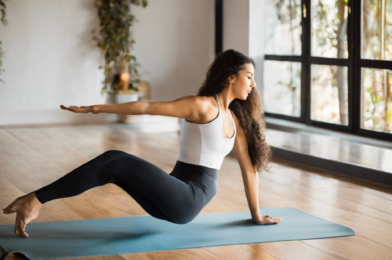The ancient practice of yoga has long been revered for its ability to connect the mind, body, and spirit, offering a holistic approach to wellness that has stood the test of time. With its origins in India, yoga has evolved into a global phenomenon, capturing the hearts and minds of people from all walks of life. For beginners, the world of yoga can seem intimidating, but with the right approach and mindset, anyone can embark on a transformative journey to enhance their physical and mental well-being.
Yoga is not merely a physical exercise but a profound practice that integrates breath, movement, and awareness. It is a journey of self-discovery, empowering individuals to explore and understand their bodies, calm their minds, and cultivate a sense of inner peace and resilience. The benefits of yoga are extensive and backed by scientific research. It has been shown to improve flexibility, strength, and balance, while also reducing stress, anxiety, and depression. Yoga can lower blood pressure, improve heart health, and even boost immunity, offering a powerful tool for preventing and managing a range of health conditions.
When starting your yoga journey, it’s important to find a style and pace that suits your needs and abilities. There are various types of yoga, from gentle Hatha and restorative Yin to more vigorous Vinyasa and power yoga. Beginners should start slowly, focusing on proper alignment and breathing techniques, and gradually increasing the intensity and duration of their practice. Online yoga classes are a convenient way to get started, offering the guidance of experienced instructors from the comfort of your own home.
Equally important is finding a qualified and supportive teacher who can provide personalized guidance and create a safe and inclusive environment for your practice. A good instructor will help you modify poses as needed and encourage you to listen to your body, ensuring a safe and enjoyable experience. As you progress, you will begin to notice the subtle changes in your body and mind – increased flexibility, improved strength, a sense of calm, and enhanced focus. Embrace these changes and let them motivate you to continue your practice.
Yoga is a journey of self-acceptance and self-love. It invites you to honor your body, respect its limits, and celebrate its capabilities. Through regular practice, you will cultivate a deeper mind-body connection, learning to move with intention and breath, and finding stillness and ease in each posture. Yoga is not just about mastering complex poses but about discovering your true self and embracing the present moment. It is a journey that extends beyond the mat, teaching you to live with more awareness, gratitude, and compassion.
As a beginner, don’t be intimidated by the seemingly advanced poses you may see on social media or in classes. Remember that yoga is a personal practice, and your journey is unique to you. Start where you are, embrace modifications, and listen to your body’s cues. With consistency and patience, you will gradually build strength, flexibility, and confidence, both on and off the mat. The key is to maintain regular practice and embrace the challenges and triumphs along the way.
In addition to its physical and mental benefits, yoga also offers a wonderful opportunity to connect with a community of like-minded individuals who share a passion for wellness. Joining a local yoga studio or participating in community events can provide a sense of belonging and support. Whether you’re practicing alongside others in a class or connecting with a global community through online platforms, yoga can help you build meaningful relationships and foster a sense of camaraderie and shared purpose.
Lastly, as you embark on your yoga journey, remember to approach it with an open mind and a sense of curiosity. Yoga is not just an exercise routine but a lifestyle that can enrich your physical, mental, and spiritual well-being. Through regular practice, you will not only transform your body and calm your mind but also cultivate a deeper sense of self-awareness and connection to the world around you. So, roll out your mat, take that first step, and embrace the wonderful journey towards wellness that yoga has to offer.


